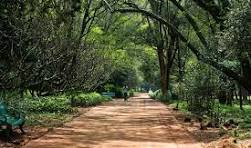Discovering the Rich Tapestry of Nairobi National Museum

Nairobi, the vibrant capital city of Kenya, is a melting pot of cultures, histories, and stories waiting to be explored. One of the gems nestled within this bustling metropolis is the Nairobi National Museum. This institution stands as a testament to Kenya's rich heritage, offering a captivating journey through time and culture. In this blog post, we'll delve into the history of the Nairobi National Museum, its gazetting, its role in the lives of Nairobi residents, its significance, recent renovations, and any trending information that adds to its allure. The Nairobi National Museum has its roots in the colonial era, with its establishment dating back to 1920. Originally founded as a place to exhibit East African natural history specimens, the museum's mission evolved over the years to encompass a broader scope, including ethnography, paleontology, art, and archaeology. In 1922, the museum was officially gazetted as the Corydon Museum, named after Sir Robert Corydon...


